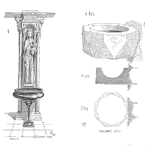
Here is an example of how to determine the future value of a specific reliability task. Many of us face the challenge of how to justify spending product development resources to provide insights and information to the rest of the team. Accelerated life testing (ALT) is particularly difficult: It is time consuming, expensive, and at times statistically complex. Having a clear method to estimate the value serves your career and the organization well, as both benefit from the right investments.













